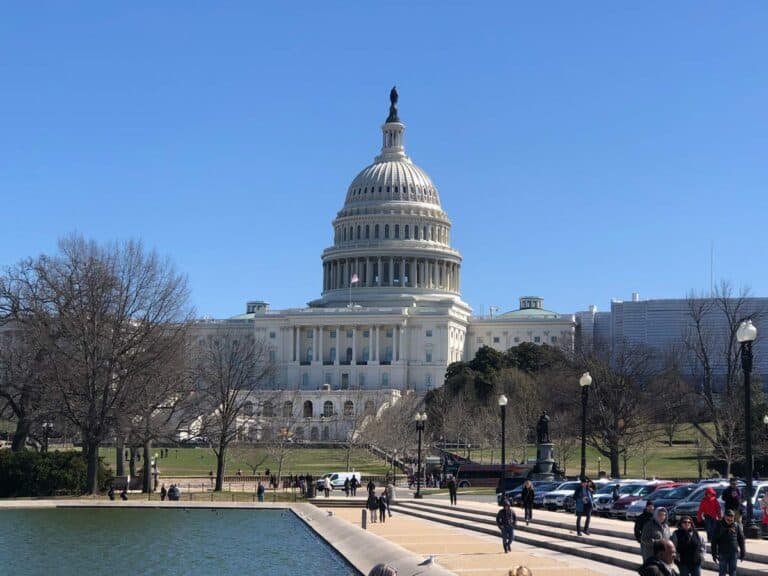
Editor’s Note: We’re all dreaming of travel ahead. Here’s some inspiration for future adventures. We share places, products and activities we recommend. If you make a purchase using a link on our site, we may earn a commission.
Washington, DC, the United States capital, is a captivating city to visit, whether for a short excursion or long foray. There are so many sights to take in and savor that it can be daunting for tourists to determine which spots to add to their itinerary.
A destination such as this is worthy of revisits. On one such umpteenth trip, I decided to check out sights that I had not seen during my earlier visits.

National Museum of the American Indian
Built by Native architects, the NMAI is the largest museum to represent Native Americans of the Western Hemisphere, “from the Arctic Circle to Tierra del Fuego,” as noted by its website.
The architecture and design both inside and out pay homage to Native beliefs and culture. According to the World Architecture website, the main entrance faces east.
It is “aligned perfectly to the cardinal directions and the center point of the Capitol dome, and filled with details, colors, and textures that reflect the Native universe.” All are important considerations in the Native culture.
Waiting in line for the museum to open its doors, I admired the massive, buff-colored undulating exterior of the building that reminded me of natural rock formations found in states like Idaho and Utah. Even the surrounding landscape pays tribute to the world of the first people. I noticed trees, flowering plants, shrubs and wetlands that actually evoked the ecology of the Potomac River area 500 years ago.

Find a hotel or Airbnb in Washington, D.C.
Immersing in Native Culture
Once inside the NMAI, I followed other visitors into the elevator to start my tour from the fourth floor of the museum. My visit began by watching a short video with other museum-goers that served as an introduction which familiarized us with the diverse traditions of Native life.
The NMAI is a repository of more than 12,000 pieces of art and artifacts encompassing more than 12,000 years of history and over 1,200 Indigenous tribes spread out through North and South America.
The first exhibit I walked into was simply titled “Americans.” It highlighted the inescapable ways in which Native American stories, identities and images were embedded into the cultural psyche of the American world.
The displays ranged from a matchbox to a Land O’ Lakes butter box to a Tomahawk missile. The posters and objects arrayed along the walls in the black colored, brightly lit room laid out in no uncertain terms the depth and ubiquity of Native Americans in everyday American life, many times even in a degrading manner.
A room was devoted to the accurate story of Pocahontas, while in another the events of “The Trail of Tears” brought about a solemn feeling. The exhibition itself was educational, impressive and thought-provoking in equal measures.
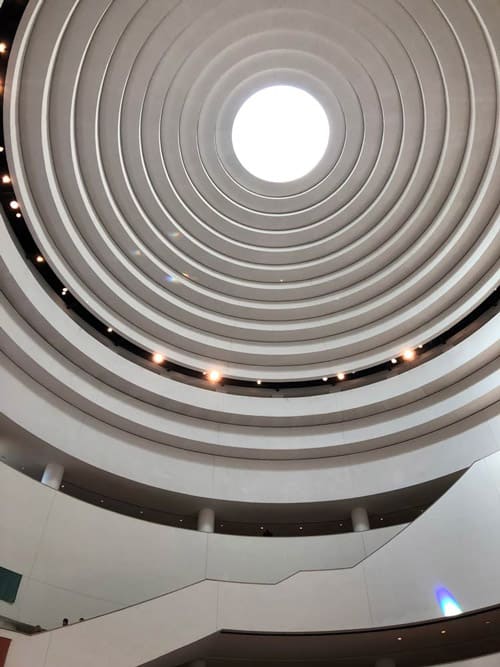
More Exhibits on Lifestyle of Hopi and Inka
Walking into the exhibits on Native American clothes and lifestyles, I realized I was being immersed in a world that I did not know much about. The gorgeously crafted outfits, jewelry, baskets, bags and other handicrafts were a sight to behold
I particularly loved the display of corn: black, maroon, red and yellow, shining like mini jewels at the exhibit titled, “The Heart of the Hopi.” The information was a tribute to the importance of this ancient crop in Hopi culture.
Similarly, fascinating was the exhibition on “The Great Inka Road,” which showcased the history and engineering of the UNESCO Heritage Site, a road that connected Cusco to the entirety of the Inka Empire.
In the “Nation to Nation” exhibit, I learned about the role of Native Americans in the signings of various treaties between the United States and many of the Native nations. It was intriguing to read the details of these historical treaties that noted the ways and reasons numerous tribes ceded their land.
Then once again, I was back to the expansive lobby with its domed skylight ceiling, embodying the Native connection to the open skies. Underneath the soaring skylight, I spent some time admiring the beautifully carved canoes of various tribes and the rows of flags of varied Native nations.
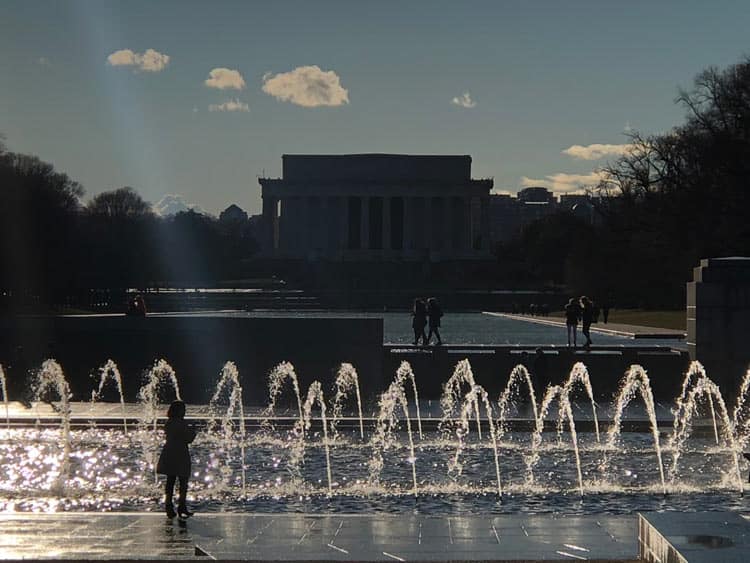
Strolling by the National Mall, the Bartholdi Fountain, the Washington Monument and the Lincoln Memorial
If you have spare time on your hands in Washington, DC, you can visit or walk by some of the other sights in this neighborhood. Across the street, the Capitol stands regal and sublime.
The National Mall, with its fountains, its reflecting pool and memorial statues, is the perfect point to stand and click some photos. Step inside the U.S. Botanic Garden, also on Independence Avenue, situated across from the Capitol if you have some moments to afford.
Capture all of the memories and historic sites with a pocket-sized camera from CANON. We love the Refurbished Power Shot 190 IS Blue.
The Bartholdi Fountain, a spectacular work by Frederic Auguste Bartholdi, the famed creator of the Statue of Liberty, is definitely a special draw.
I continued my walk to catch sight of some very familiar icons. The Washington Monument, the illustrious venue for protests, celebrations and memorials, rose majestically under the clear blue skies.
The Lincoln Memorial shone in the distance beyond the soaring fountains under the setting sun and I watched as tourists snapped pictures of the exalted sight.

The World War II Memorial
I spotted The World War II Memorial, which I had never visited before. I decided to spend a few minutes amidst the somber grey columns, 56 in all, representing the states, territories and the District of Columbia commemorating the war effort.
The columns were linked by a bronze rope, decked with a sculpted wreath, bearing the inscription of a state or territory name. It created an awe-inspiring effect as the entire vista glowed in the evening sun while the pools and fountains brought in an additional luminous effect.
But my mood immediately became somber when I stopped at the Freedom Wall with its 4,000 gold stars, each star symbolizing 100 American military deaths in the war.

The National Museum of American History
Of course, it goes without saying that when you are in Washington DC you have to visit the National Mall and the many implausibly free Smithsonian museums even if you have been there before.
The newest addition is the National Museum of African American History and Culture, a dazzling marvel of architecture that can stop you in your tracks. Unfortunately for me, it was peak tourist season and I failed to procure the valued timed ticket.
Emerging into the Mall after my swift ride on the DC Metro, I focused on the National Museum of American History, a museum that had not been in my previous itineraries.
The museum showcased the many, many objects and artifacts that have been a part of and have impacted the history of this country. Dorothy’s ruby slippers from the 1939 classic film, “The Wizard of Oz,” one of the first Apple computers and Crayola crayons were just a few of the fun items that caught my attention.
The historic lunch counter from F. W. Woolworth’s store from the Civil Rights era which brought forth a youth movement to challenge racial inequality, made for a memorable viewing of American history.
A favorite was the “Many voices, One Nation” exhibition which charted the path of the nation and its many communities through cultural objects, paintings, drawings and artifacts to the thought behind e pluribus unum, the Latin emblem on the great seal.
Another gorgeous exhibit was “The First Ladies.” It explored and chronicled the lives and legacies of the wives of every American president.
Revisiting the National Air and Space Museum
By now, completely satiated with history and culture, I asked myself a question, “How could I not spend a couple of hours at one of the most popular Smithsonian museums?”
The National Air and Space Museum was a delight even on repeated visits, even on my fourth trip. Many attributes had changed since my last visit about seven years ago.
One aspect that had not changed was the instant euphoria I felt as soon as I stepped into the hall with its jaw-dropping collection of aircrafts and space vehicles. Again, I gaped at the Apollos, the Skylab, the many moon vehicles, rockets, military planes and airplanes.
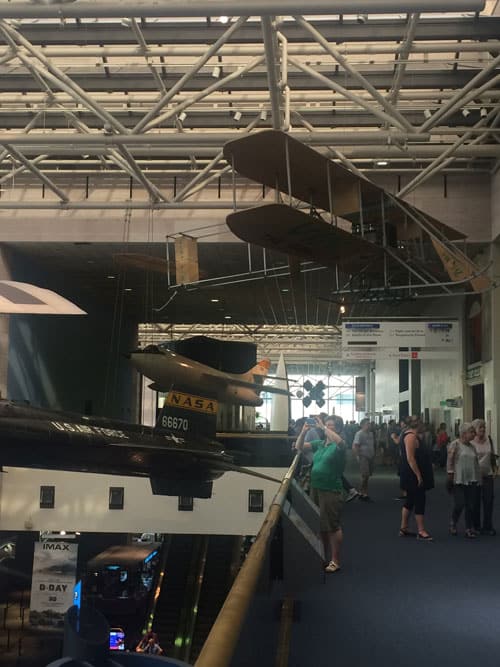
Orville and Wright Aircraft
Suddenly, I realized one thing was missing — the Orville and Wright aircraft.
In 2003 the 1903 Wright Flyer was given a place of honor with its own exhibition area. I walked into a beautifully designed space that celebrated the beginning of flight on Dec. 17, 1903.
Wilbur and Orville Wright’s flying machine, Kitty Hawk was displayed with various manuscripts, documents, instruments and reproductions of other aircrafts designed by the brothers, laying the foundation of aeronautics as we know it today.
What to Explore in the Washington DuPont Circle Neighborhood
I reserved the next day to walk through a previously unexplored neighborhood, unfolding more gems of this capital city. Once again, using the Metrorail, I rode to my next destination.
After a short walk from the station, I landed in a beautiful, leafy neighborhood dotted with gorgeous row houses and palatial mansions. I had reached DuPont Circle, home to institutions, museums, restaurants, art galleries and shops.
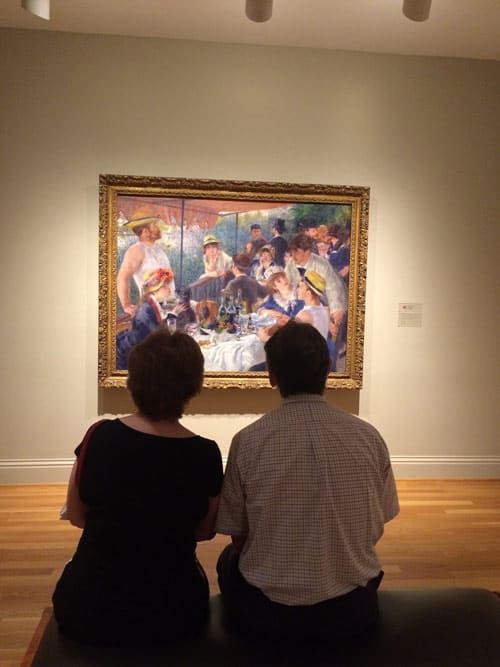
The Phillips Collection
I stopped by The Phillips Collection, a little gem known as “America’s First Museum of Modern Art,” according to its brochure. The museum showcased a formidable collection of Impressionist and modern paintings.
It was easy enough to spend an hour at the museum enjoying art ranging from Renoir to Matisse, Jacob Lawrence to Georgia O’Keeffe to modern, contemporary artists.
Strolling through the intimate museum, I came upon “The Wax Room,” an intriguing installation of a tiny room with walls of melted wax. Stepping inside, I was enveloped in a sea of yellow courtesy of the single bulb that hung from the ceiling.
I learned that the artist Wolfgang Laib, was influenced by the Rothko Room at the museum, another engaging space with four signature paintings on each wall by Mark Rothko, the famous abstract artist.
A View of Embassy Row
This neighborhood was also home to many embassies. On Massachusetts Ave., known as Embassy Row, is a two-mile stretch where you can indulge in a self-guided walking tour to peek at the grand buildings.
You can walk past many diplomatic missions and see the Mahatma Gandhi Memorial in front of the Indian Embassy and the statue of Nelson Mandela gracing the front of the South African Embassy.
Before long, I was in front of The Octagon, the headquarters of the American Institute of Architects since 1898 but also with its own powerful history, having been built in 1801 and serving as a temporary White House in 1814. I would have loved to see the museum inside, but it was almost five and its closing time was 4 p.m. The visit would have to wait.
Walking back to my hotel after an exhilarating day of sightseeing, I pondered the many places I visited on this short trip.
No matter how many times you go to Washington DC, there are always new delights to be discovered to create a memorable occasion.
If You Go
Find a hotel in Washington, D.C. that meets all your specific needs at the perfect price for you here.
- National Museum of the American Indian
- Fourth Street and Independence Ave., SW
- Washington, DC 20560
- World War II Memorial
- 1750 Independence Ave., SW
- Washington, DC 20024
- National Museum of American History
- 1300 Constitution Avenue, NW
- Between 12th and 14th St.,
- Washington, DC 20560
- National Air and Space Museum
- 655 Jefferson Drive, SW
- Washington, DC 20560
- The Phillips Collection
- 1600 21st St., NW
- Washington, DC 20009
Author Bio: Susmita Sengupta, an architect by background from New York City, loves to travel with her family. Her articles are published in many online travel magazines.
